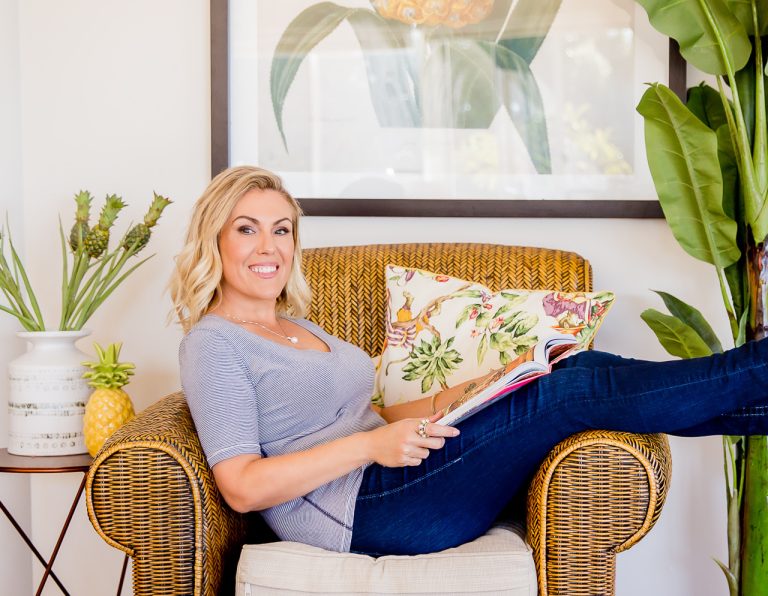By Chelsea Ross, Founder of Goddess Retreats
There is one emotional intelligence skill that quietly transforms how you live, love, and lead. It’s not always talked about in self-help books or mindfulness checklists, but it is the foundation of inner steadiness, clarity, and wisdom.
That skill is acceptance.
Not resignation. Not apathy. Not pretending something is okay when it isn’t.
But the powerful, clear-eyed ability to say,
“This is what’s happening. I don’t have to like it. But I can stop fighting it.”
Acceptance gives you emotional space to respond instead of react. And from that space, a new possibility emerges: not forced positivity, but true, embodied gratitude.
Because here’s the thing no one tells you:
When you’re hurting, gratitude can feel out of reach.
But acceptance? Acceptance is the bridge that gets you there.

Why Acceptance Comes First
There’s a common misunderstanding in wellness culture that gratitude is the key to peace. And it often is. But what if you’re grieving? Burnt out? Or just overwhelmed by the mess of life? Telling yourself to “be grateful” in those moments can feel like spiritual gaslighting.
We often skip over the one thing that can opens the door to gratitude; and that’s acceptance. In behavioural science, if you want to shift someone’s mindset, you don’t start with the finish line. You start where they are. Gratitude is the finish line. Acceptance is the start.
Acceptance doesn’t ask you to find the silver lining.
It just asks you to stop fighting the rain. And when you do, when you stop resisting what already is, you free up energy that was otherwise locked in tension. That energy becomes space—space where healing, clarity, and eventually, gratitude can emerge naturally.
What Acceptance Looks Like in Practice
This isn’t a theory. It’s deeply practical. Here’s how it shows up in everyday life.
Scenario 1: You didn’t get what you hoped for
Old pattern:
Frustration, rumination, self-blame, bitterness.
New path:
You say, “I feel disappointed. That’s real.” You stop negotiating with reality. You give yourself space to feel without spiraling. A few hours (or days) later, you genuinely notice:
“Maybe this wasn’t right for me after all. I’m grateful I have space for something better.”
Scenario 2: You’re stuck in an emotional low
Old pattern:
Distract, numb, fix.
New path:
You say, “I’m feeling heavy today. I don’t need to solve it.” You stay in your body. You move slowly. You let the feeling exist.
By the evening, you notice a sense of calm has returned. And without forcing it, you realise:
“I’m thankful I allowed myself to feel instead of forcing myself to function.”
This is what emotional intelligence looks like in motion.
How Acceptance Builds Emotional Balance and Wisdom
Emotional balace is not about always feeling great. It’s about recognising what’s real, without letting it hijack your behaviour. And acceptance is what allows that recognition to land in a meaningful, self-led way.
You shift from:
- “This shouldn’t be happening”
to - “This is happening…what do I choose now?”
And once you’re no longer burning energy resisting the present moment, you have space for higher emotions to arise naturally.
Because when the nervous system settles, perception softens.
And what once felt like chaos begins to feel manageable, sometimes even beautiful.
Three Practices to Help You Accept What Is (So You Can Reach What’s Possible)
1. Feel It. Name It. Stay With It.
This is the most direct path to acceptance.
When an uncomfortable feeling arises, don’t dodge it. Don’t justify it. Just notice it.
Say out loud:
“I’m feeling ___ right now. That’s okay.”
Then breathe. Stay. Let your presence be enough.
This short-circuits the need to fix, chase, or numb—and helps emotions move through, not around, you.
2. Acceptance Makes Space for Gratitude
When you’re in emotional tension, asking yourself “What can I be grateful for right now?” may feel hollow.
Instead, ask:
“Can I accept what’s happening, just for today?”
That alone softens the grip of resistance.
Gratitude will arrive in its own time—not because you forced it, but because you cleared space for it.
3. Anchor in the Present, Not in the Ideal
When the mind spirals into “what should have been,” pull yourself back by asking:
“What is true right now?”
Often the answer is:
You’re breathing. You’re safe. You have options.
From that place, it becomes easier to say:
“I may not be grateful for the situation, but I’m grateful for how I’m learning to meet it.”
Acceptance Leads to Wisdom
Acceptance is not about giving up. It is about stepping out of the constant struggle to control what cannot be controlled, and instead focusing your energy on what is within your power to change.
It is the mental and emotional discipline to say, “This is what is happening,” and to meet that moment with steadiness rather than resistance. In doing so, you free yourself from reactivity and return to a place of clarity. That clarity is what allows more grounded choices—and eventually, genuine gratitude—to emerge.
There is timeless wisdom in these simple words:
“Grant me the serenity to accept the things I cannot change,
the courage to change the things I can,
and the wisdom to know the difference.”
Acceptance is that wisdom in practice. It is a skill we build over time, through presence, reflection, and emotional honesty.
You don’t need to enjoy every circumstance or pretend something feels good when it doesn’t. But you can stop resisting what is, and in that shift, you create space. And often, in that space, gratitude begins to take root—not as a forced exercise, but as a natural result of meeting life as it is.This is how we grow stronger, wiser, and more emotionally free. Not by perfecting our lives, but by learning to respond to them with intelligence, presence, and compassion


























